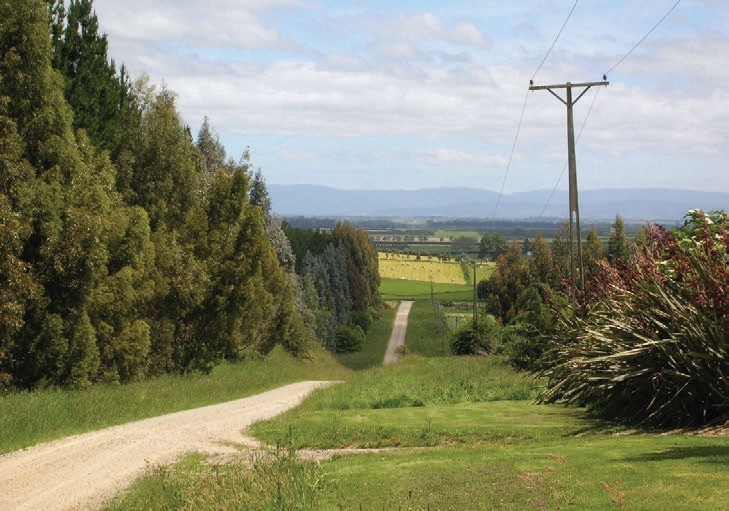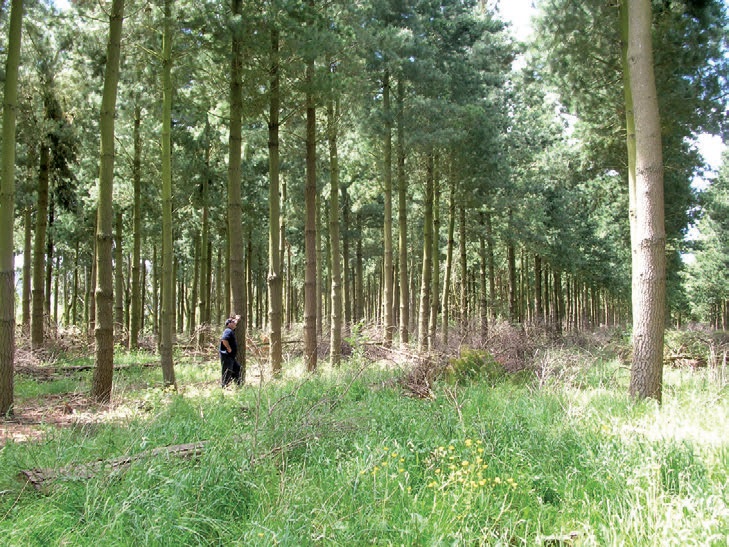An investment in forestry down south
Alistair Wilson, New Zealand Tree Grower February 2009.
For a number of years I had a desire to grow some trees. By the early 1990s my wife and I had gained the confidence and financial stability to think about investing in forestry. With the support of a working wife, and the flexibility and financial returns of shift work we made the decision to buy a 28 hectare block and embark on an investment in forestry, with the view to it being part of useful retirement plan.
One person I spoke to prior to embarking on our project said forestry could be a good long term investment but it was not without risk. They did not elaborate and the obvious risks that sprung to mind seemed insignificant. As time has passed I realised the unforeseen risks do add exposure. While no single risk has become a serious problem, forestry is certainly not all plain sailing. Apart from the obvious fire and windthrow you can add poor silviculture and management, changing markets, new pests and diseases, climate change legislation, local body rating and policy change to name a few. Dealing with each or not dealing with these will affect the outcome of our investment.
Benefits of membership
We made a number of mistakes early on and soon found it was not just a case of plant the trees and close the gate. During the resource consent application I met Garry Morgan of the local farm forestry branch. Armed with lots of good information, Tree Grower magazines and support from Garry and other members we enjoyed good forest establishment. It is frustrating to see the mistakes non-members make and I often think of the benefits membership could bring them.
Our block is on the edge of the fertile Southland plains and is not the conventional investment block. The size of the property seemed about right and it was chosen above others for its proximity to markets and infrastructure as well as the thought that reasonable land would grow better trees.

Planting
We planted compartments of radiata, macrocarpa, and a mix of radiata and Eucalyptus nitens in alternate rows, as well as many of those things that are nice to have – poplar, alder willow, fruit trees and some natives. A fire pond provides a pleasant area for people and bird life and we like to think our roadside plantings are appreciated by the local community.
In the early stages we were keen to get our trees in the ground. Managing establishment ourselves during the early 1990s when it was hard to get good forestry contractors presented difficulties. I often wished we lived near our trees so things could be attended to with ease. Most of the planting was done over a two year period which meant silviculture fell into a compressed window of opportunity. It was not until we got some good contractors on to the work that the frustration levels dropped a bit.
Risk number one − management slop
The fertility of our land made achieving those enviable North Island tree specifications difficult, and in our situation I think impossible. Neil Barr used a term management slop. It was a descriptor for not doing the things that could have been done to better manage a forest. By all accounts Neil Barr was an exceptional forester. It would be good to meet the standards he achieved. I must confess I would have liked to achieve better establishment, a smaller diameter-over-stub and improved silviculture.
Changing markets
Risk number two would be changing markets. We planted alternate rows of eucalypt and pine with the thought of production thinning the eucalypts for chip. The eucalypts were dominating the pines at a time when the market for chip was very low. Consequently the eucalypts were thinned to waste. This was not all bad as along the way they forced good form into the remaining pines, although the lower stocking rate reduced silviculture choices.
Markets have been somewhat stagnant in recent times but we are confident there will be better times ahead. Initiatives such as NZ Wood will bring long term benefits in forestry. It would be good to see foresters continue to enjoy returns that are traditionally in the range of firm to good.
More risks

Risk number three would be pests and diseases. We have had some problems with canker in the macrocarpa and nectria in the pines, but enough remain unaffected at this stage to select a crop.
Risk number four − climate change legislation − in its current form has not affected us greatly. It has presented unexpected issues but time will tell where it will lead. Because we have a small Kyoto forest, deforestation is still a possibility at this stage. Although it has never been excellent farmland, conversion back to pasture may be an option.
Finally, a significant change in local body rating policy has seen our rates more than double over a four-year period. There are indications this trend will continue due to Southland District Council’s target rating of forestry properties. This type of risk was considered but not expected to be so severe. It is fortunate that we are part way through a rotation and not just starting out. The target rating policy will be a consideration when the decision to replant, or not, is made.
Our investment is funded solely from our wages earned in our day jobs. We must fund increasing costs until harvest or bail out. Fortunately inflation and debt have not caused us too much bother. Timber markets have been depressed but we are hopeful of compensating for the downsides by harvesting when markets have improved and by being closer to markets will bring transport cost savings.
Our investment in our forestry block should provide returns financial and otherwise. Along the way we enjoy the habitat we have created and the many different aspects of being involved in forestry. As an investment our block provides part of our retirement strategy. If the returns are good it will be very satisfying.If the risks outweigh the benefits we would need re-evaluate which direction to go − replant, deforestation, relocation or some other option.

 Farm Forestry New Zealand
Farm Forestry New Zealand

